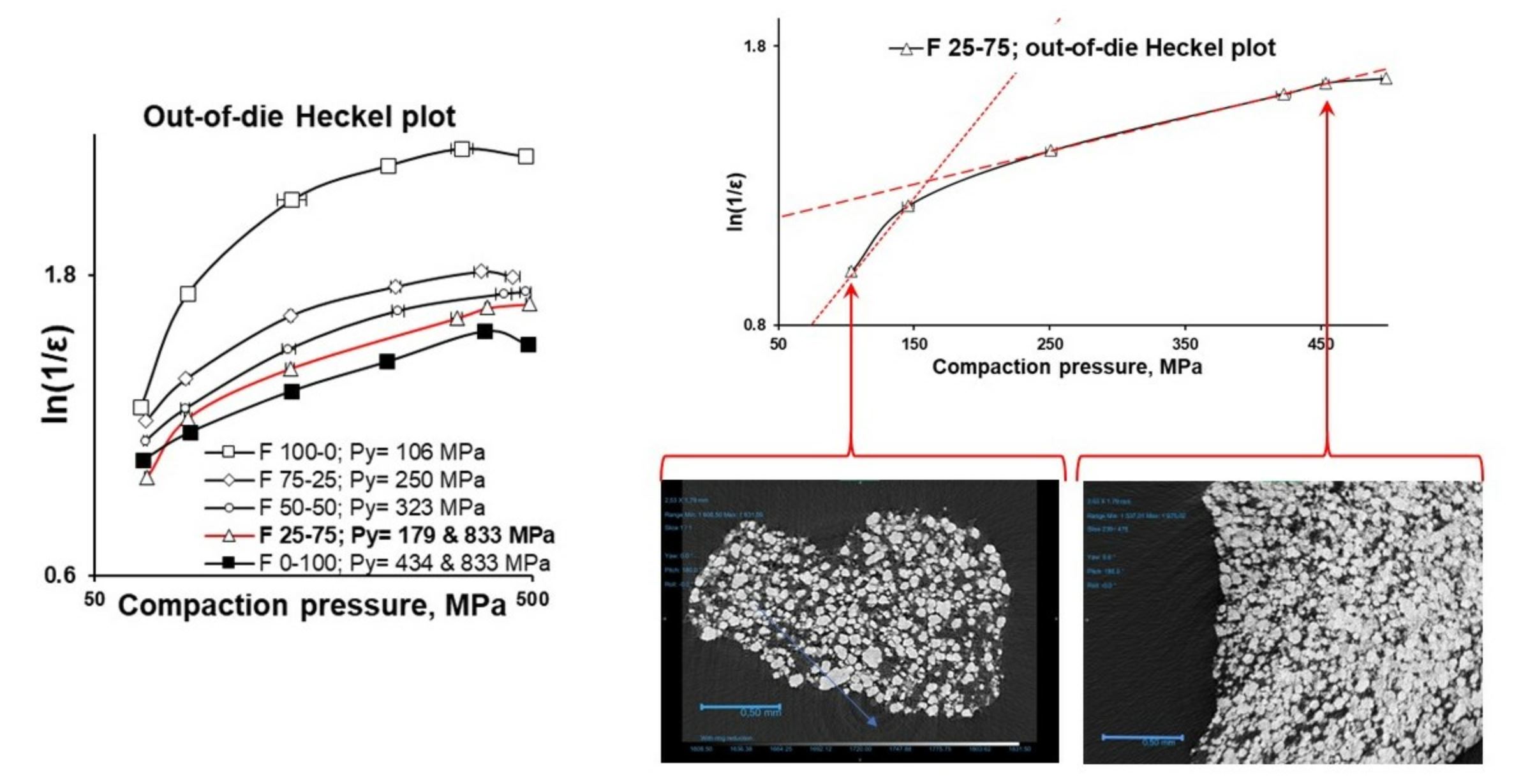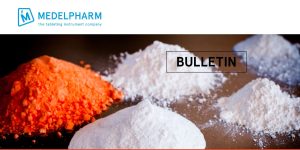The Effect of Microcrystalline Cellulose–CaHPO4 Mixtures in Different Volume Ratios on the Compaction and Structural–Mechanical Properties of Tablets

Abstract
Introduction
Tablet formulations are one of the most efficient ways of producing pharmaceutical and nutraceutical products. The blending of two or more components with specific properties and proportions enables the production of a tablet with desirable properties [1]. Structural–mechanical properties of tablets are of particular importance. Mechanical properties can influence the possibility and quality of further processing, such as coating and packaging, while structural properties can influence the biopharmaceutical attributes of tablets, such as the dissolution of the drug. Additionally, during the reverse engineering of generic tablet development, one of the most important tasks is the de-formulation of the composition of the original product, as well as the understanding of functions and the behaviour of excipients upon processing.
Mixtures of plastic and brittle deforming compounds can lead to a positive compactibility interaction [2,3,4]. Among the available examples, the combination of plastic microcrystalline cellulose (MCC) and brittle calcium phosphate (CaHPO4) is well known and very popular in tablet formulation [4,5]. Both excipients are represented as multiple grades from multiple manufacturers. MCC grades are different in terms of their size, shape, surface area, crystallinity, and moisture content, while CaHPO4 can vary regarding its granular form (as aggregated crystals) [6,7,8,9,10,11]. The grades and proportions of MCC and CaHPO4 can influence the compression, mechanical properties, and porosity, and thus the water ingress, disintegration, and drug release of tablets [12,13,14,15,16]. Notably, CaHPO4 is practically insoluble in water, but soluble in diluted acids [6]. Different proportions and grades with different particle sizes of CaHPO4 can influence the drug release in vitro, including cone formation [17,18]. Thus, such pH-dependant solubility can influence in vivo drug release as well. Therefore, the grades and proportions of MCC and CaHPO4 should be carefully selected, considering both the mechanical and the biopharmaceutical aspects.
In order to better understand the fundamental properties and mutual influence on the structural–mechanical properties, the single components and binary mixtures of MCC and CaHPO4 have been investigated. The addition of 25% (w/w) of MCC to CaHPO4 resulted in an increase in compactibility due to increased densification [2]. A simple relationship was observed with increasing mass fractions of MCC on the mean yield pressure and elastic recovery of the compacts. At all force application rates, the mean yield pressure decreased, while elastic recovery increased with increasing mass fractions of MCC, attributed to the dominating plastic deformation effect of microcrystalline cellulose [5]. The binary mixture of MCC and CaHPO4 was investigated to determine the relationship between the solid fraction, compressive stress, and mechanical properties. The plastic deformation was found to be predetermined by the percolating cluster-forming component [19]. Based on the compression phase and dwell time (the area–quotient–index) data, the percolation threshold of CaHPO4 in the mixture with MCC was estimated [20].
A properly instrumented tablet press is a technical requirement for performing close investigation of the tableting process and improving the information-based understanding of physical processes, along with their consequences on the resulting structural–mechanical properties of the tablets. Recently, equipment such as compaction simulators containing high-tech sensors and sophisticated user-friendly software have become more available [21]. This have facilitated reinvestigations of well-known combinations of excipients such as MCC and CaHPO4, as well as detailed considerations.
The aim of this study was to investigate the tableting behaviour of binary mixtures of microcrystalline cellulose and calcium phosphate dibasic anhydrous (represented by CEOLUS UF-711 and DI-CAFOS® A60) in different volume ratios at a range of compaction forces in order to observe and explain the influence of mixture composition on the structural–mechanical properties.
Download the full article as PDF here: The Effect of Microcrystalline Cellulose–CaHPO4 Mixtures in Different Volume Ratios on the Compaction and Structural–Mechanical Properties of Tablets
or read it here
Materials
Microcrystalline cellulose (MCC) powder (CEOLUS UF-711; Asahi Kasei, Tokyo, Japan; Figure 1A) and calcium phosphate dibasic anhydrous (CaHPO4; DI-CAFOS® A60; Budenheim KG, Budenheim, Germany; Figure 1B) were used as primary components for the binary mixtures, while silica (SYLOID® 244FP; Grace GmbH, Worms, Germany) and sodium stearyl fumarate (PRUV®; JRS Pharma, Rosenberg, Germany) were introduced into the composition as a glidant and a lubricant, respectively. The specific grades of MCC, CaHPO4, silica, and sodium stearyl fumarate were used because of their availability in our laboratory during the planning of the experiment.
Preparation of Tablets
Powder mixtures were tableted with 11.28 mm flat punches to obtain a target mass of 500 mg using a STYL’One Nano (MEDELPHARM, Beynost, France) compaction simulator. Compression cycles simulated a small rotary press with a turret diameter of 180 mm, precompression roll diameter of 44 mm, angle between rollers of 65 degrees, compression roll diameter of 160 mm, angle between main compression and beginning of compression ramp of 60 degrees, angle of ejection ramp of 20 degrees at a simulated tableting speed of 70 rpm (maximum for STYL’One Nano), pre-compaction force of 5 kN (50 MPa), and compaction force of 10–50 kN (100–500 MPa). Powder-feeding into the die was performed automatically via the feed shoe [22].
Mohylyuk, V.; Paulausks, A.; Radzins, O.; Lauberte, L. The Effect of Microcrystalline Cellulose–CaHPO4 Mixtures in Different Volume Ratios on the Compaction and Structural–Mechanical Properties of Tablets. Pharmaceutics 2024, 16, 362. https://doi.org/10.3390/pharmaceutics16030362
Read also our articles on STYL’One Nano here:
- STYL’One Nano the revolutionary benchtop R&D tablet press
- Material characterization with an extended Dwell Time compression profile on STYL’ONE NANO
- Material characterization with a V-shape compression profile on STYL’ONE NANO


